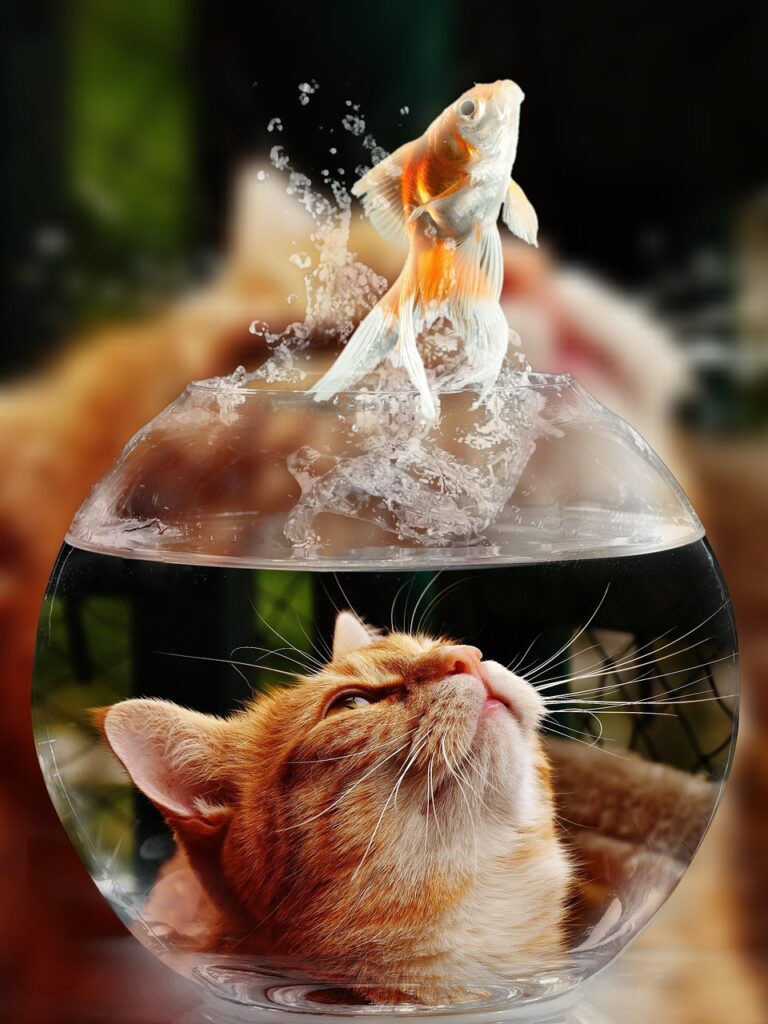Goldfish, those mesmerizing aquatic companions, have captured the hearts of hobbyists and enthusiasts for centuries. Their vibrant colors, graceful movements, and charming personalities make them a favorite choice for both novice and experienced fish keepers. In this comprehensive guide, we’ll dive into the fascinating world of goldfish, exploring everything from their origins to care tips that will ensure your aquatic friends thrive.
Origins and Varieties
Goldfish, scientifically known as Carassius auratus, trace their roots back to ancient China. First selectively bred over a thousand years ago, these ornamental fish have undergone numerous transformations, resulting in the diverse array of shapes and colors we see today. Common varieties include the elegant Comet, the fancy Fantail, the regal Ryukin, and the classic Common goldfish.
Setting Up the Perfect Home
Creating a suitable environment is paramount for the well-being of your goldfish. A spacious aquarium with proper filtration is essential. Goldfish are notorious for producing more waste than other fish, so a robust filtration system will help maintain water quality. Aim for a minimum of 20 gallons per goldfish and provide ample aeration to ensure oxygen levels are optimal.
Water Quality and Maintenance
Goldfish thrive in clean water, and regular maintenance is crucial for their health. Invest in a reliable water testing kit to monitor parameters like ammonia, nitrites, and nitrates. Perform partial water changes every week to keep these levels in check, and be mindful of the water temperature—goldfish prefer cooler water, ideally between 65-75°F (18-24°C).
Nutrition: The Key to Radiant Colors
A well-balanced diet is essential for vibrant colors and overall health. Choose high-quality goldfish pellets or flakes as the staple diet, and complement it with occasional treats like live or frozen brine shrimp, bloodworms, and daphnia. Overfeeding is a common pitfall, so feed your goldfish small, frequent meals to prevent digestive issues.
Social Creatures: Companionship Matters
Social behavior in goldfish is a fascinating aspect of their lives that often surprises many aquarium enthusiasts. Contrary to the stereotype of goldfish as solitary creatures, they are, in fact, social beings that can form bonds and exhibit interesting group dynamics.
Social Dynamics: Goldfish display social behaviors such as swimming together, playing, and even engaging in hierarchical structures within their group. They may establish territories within the aquarium, and observing these interactions can be both entertaining and enlightening. Some goldfish varieties, like the common goldfish and the Comet, are particularly known for their social nature.
Benefits of Companionship: Keeping goldfish in pairs or groups provides several benefits to their overall well-being. One significant advantage is that they are less prone to stress. Stress can negatively impact a goldfish’s immune system, making them more susceptible to diseases. Companionship helps reduce stress levels and creates a more enriching environment.
Preventing Loneliness: While goldfish can survive as solitary pets, they may experience loneliness when kept alone. Loneliness can lead to lethargy, decreased activity, and a generally less vibrant demeanor. Introducing companions can alleviate these issues and contribute to a more active and engaged lifestyle for your goldfish.
Tank Size and Compatibility: When considering companionship for your goldfish, it’s crucial to ensure that the tank is spacious enough to accommodate multiple fish comfortably. Overcrowded conditions can lead to stress and territorial conflicts. As a general guideline, provide at least 20 gallons of water per goldfish, and more if possible.
Compatibility is another key factor. Different goldfish varieties have distinct personalities and may exhibit varying levels of aggression or sociability. Before introducing new fish, observe their behavior in the store or quarantine them briefly to ensure compatibility.
Observation and Monitoring: After introducing companions, closely observe their interactions. Healthy social behavior includes swimming together, exploring the tank as a group, and minimal aggressive behavior. Keep in mind that some chasing or minor territorial disputes are normal as the goldfish establish their hierarchy.
Adaptation Period: It’s common for goldfish to go through an adaptation period when introduced to new tankmates. During this time, closely monitor their behavior and be prepared to intervene if any signs of stress or aggression arise. Providing ample hiding spots and visual barriers, such as plants or decorations, can help reduce potential conflicts.
Common Health Issues and Prevention
Goldfish, like any pet, can face health challenges. Keep an eye out for signs of common issues such as swim bladder disorder, fin rot, and fungal infections. Maintain a clean environment, avoid overfeeding, and quarantine new additions to prevent the spread of diseases. Prompt action and consultation with a vet can make a significant difference in treating ailments.
Conclusion
In conclusion, goldfish are not just beautiful ornaments; they are fascinating, intelligent beings that bring joy to countless households. By understanding their origins, providing a suitable habitat, offering a balanced diet, and ensuring good health, you can embark on a rewarding journey as a goldfish enthusiast. Remember, a happy and healthy goldfish is a sight to behold, and with the right care, your aquatic companions will flourish for years to come.


